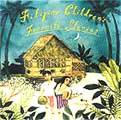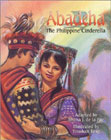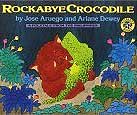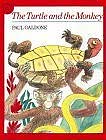
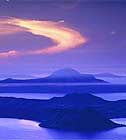
Philippine
Folk Tales
by Mabel Cook Cole
Moro
- Introduction
- Mythology of Mindanao
- The
Story of Bantugan
Moro:
Introduction
ABOUT the year 1400 something happened which changed the beliefs and customs of many of the tribes of the southern Philippines and made of them a powerful and dreaded people.
It was about this time that Arabian traders and missionaries began to establish themselves in the Islands, and soon these were followed by hordes of Mohammedan converts from the islands to the south. Among the newcomers were men who became powerful rulers, and they, in time, brought together many of the settlements which formerly had been hostile to each other and united them under the faith of Islam. Those who accepted the new faith adopted the dress and many of the customs of their teachers and came to be known as Moro.
With the possession of firearms, which were introduced by the newcomers, the Moro grew very daring and were greatly feared by the other natives. And soon they began to make long trips on the sea to the north and south, carrying on trade and making many surprise attacks for loot and slaves.
At the time the Spaniards discovered the Philippines, the Moro were a terror to the other inhabitants, and they continued to be so until very recent years. They became ferocious pirates infesting the southern seas and preying upon the rich trade which the Spaniards carried on with Mexico. Stone walls and watch towers were built at advantageous points to guard against them, but bays and creeks which afforded opportunities for lurking, surprise, and attack continued to be frequented by the treacherous warriors.
Since American occupation the waters have been made practically free from their ravages, but on land they have continued to give trouble. The greater part of the Moro now live in the Sulu Archipelago and on the Island of Mindanao. They range in degree of civilization from sea "gypsies," who wander from place to place, living for months in their rude outrigger boats, to settled communities which live by fishing and farming, and even by manufacturing some cloth, brass, and steel. Their villages are near the coast, along rivers, or about the shores of the interior lakes, the houses being raised high on poles near or over the water, for they live largely on food from the sea.
Their folk-lore, as will be seen from the following tales, shows decided influence from Arabia and India, which has filtered in through the islands to the south. [140]
Cole,
Mabel Cook. Philippine Folk Tales. London:
Curtis Brown,
1916.
Amazon.com: Buy the book in paperback.
Notes
[140] No tales illustrate
to better advantage the persistence of old stories and beliefs than do
these of the Moro. They are permeated with incidents very similar to those
still found among the pagan tribes of the Archipelago, while associated
with these are the spirits and demons of Hindu mythology. Finally we find
the semi-historical events recorded by the Mohammedanized Malay, the ancestors
of the tellers of the tales.
Return to place in story.
©Heidi
Anne Heiner, SurLaLune Fairy Tales
E-mail: surlalune@aol.com
Page last updated June 1, 2005
www.surlalunefairytales.com



